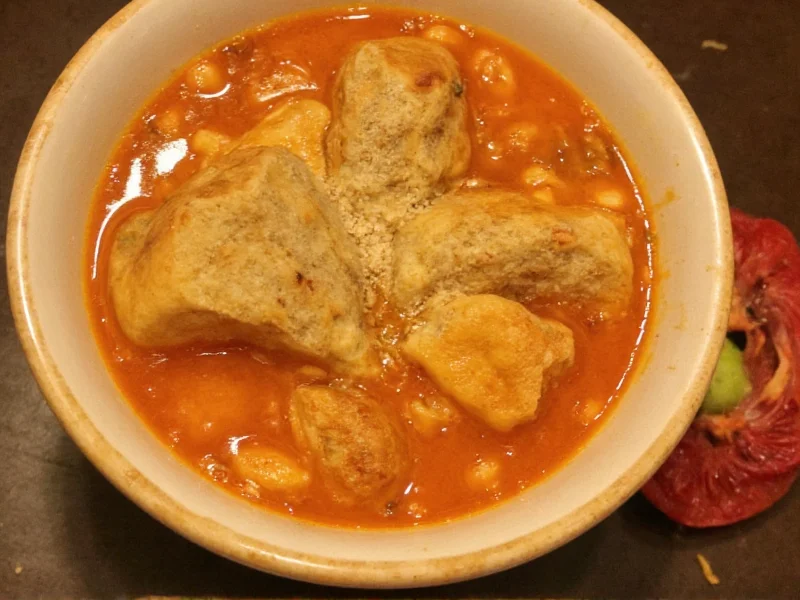When selecting the ideal bread for soup pairing, understanding the structural and flavor dynamics is essential. The best breads for soup maintain integrity when dipped while absorbing just enough liquid to enhance both components. This delicate balance transforms a simple meal into a satisfying culinary experience that has endured across cultures and centuries.
The Science Behind Soup and Bread Pairing
Bread selection for soup isn't merely tradition—it's food science. The ideal soup bread possesses specific physical properties that interact with liquid components. Crust thickness creates a protective barrier against immediate sogginess, while the crumb structure determines absorption rate. Dense, irregular holes in artisan breads like sourdough provide optimal surface area for broth capture without structural collapse.
Temperature plays a crucial role in successful pairings. Warm bread with cool soup creates textural contrast, while room-temperature bread with hot soup allows gradual flavor integration. The starch composition in different flours affects how bread interacts with various soup bases—wheat's gluten structure maintains integrity better in brothy soups, while rye's denser crumb excels with hearty stews.
Top Bread Choices for Different Soup Types
Understanding soup characteristics guides optimal bread selection. Cream-based soups require sturdier breads that won't disintegrate, while brothy soups pair well with more absorbent varieties. The following table outlines ideal pairings based on soup classification:
| Soup Type | Recommended Bread | Why It Works |
|---|---|---|
| Creamy soups (bisques, chowders) | Sourdough boule, ciabatta | Dense crumb structure absorbs without dissolving; tangy flavor cuts richness |
| Brothy/light soups (consommé, miso) | Baguette, focaccia | Lighter texture complements delicate flavors; crisp crust adds textural contrast |
| Hearty/stews (goulash, chili) | Rye bread, pumpernickel | Robust flavor matches intensity; dense structure withstands chunky ingredients |
| Cold soups (gazpacho, vichyssoise) | Grilled sourdough, olive bread | Warm contrast enhances experience; bold flavors stand up to chilled bases |
Regional Pairing Traditions Around the World
Cultural traditions have refined soup-bread pairings over generations. French cuisine pairs crusty baguettes with French onion soup, where the bread's structure supports melted cheese while absorbing savory broth. In Italy, ciabatta's open crumb makes it perfect for tomato-based minestrone, capturing herbs and vegetables without becoming mushy.
Eastern European traditions match dense pumpernickel with borscht, where the bread's earthy flavor complements beets and sour cream. In coastal regions, olive oil-rich breads like Spanish pan con tomate accompany fish soups, their richness balancing delicate seafood flavors. These time-tested combinations demonstrate how local ingredients naturally evolved into perfect pairings.
Essential Characteristics of Ideal Soup Bread
Three critical factors determine bread suitability for soup pairing. First, crust thickness should be substantial enough to create a protective barrier—typically 1/8 to 1/4 inch provides optimal resistance to immediate sogginess. Second, crumb structure requires irregular, moderately sized holes that absorb liquid gradually rather than all at once.
Flavor profile represents the third crucial element. Mild-flavored soups benefit from breads with subtle complexity like whole wheat, while robust soups pair well with assertive flavors like rye or seeded breads. Freshness matters significantly—bread consumed within 24 hours of baking maintains optimal structural integrity for dipping. Day-old bread can work if properly revived through light toasting.
Preparing Bread Specifically for Soup Service
Professional presentation enhances the soup-bread experience. Cut bread into uniform slices approximately 3/4 inch thick for optimal dipping geometry. For brothy soups, consider lightly toasting slices to create additional moisture resistance while enhancing flavor through the Maillard reaction.
Seasoning options can elevate simple pairings—brushing slices with olive oil and herbs before toasting complements Mediterranean soups, while a dusting of flaky salt enhances umami in broths. Temperature coordination proves crucial: serve bread slightly warmer than room temperature to create pleasant contrast with hot soups. For cold soups, grilled bread provides welcome warmth and textural contrast.
Common Pairing Mistakes to Avoid
Several pitfalls can ruin otherwise excellent soup-bread combinations. Using overly soft sandwich bread with substantial soups creates disintegration and textural disappointment. Similarly, pairing strongly flavored breads like garlic bread with delicate consommés overwhelms subtle soup notes.
Temperature mismatches represent another frequent error—serving cold bread with hot soup creates uncomfortable temperature shock. Over-toasting creates excessive crunch that competes with soup texture rather than complementing it. Finally, ignoring cultural context can lead to jarring combinations, such as pairing sweet Hawaiian rolls with traditional French onion soup.
Practical Tips for Home Cooks
When experimenting with soup-bread pairings, start with small adjustments rather than radical changes. If your tomato soup lacks dimension, try adding a pinch of smoked paprika to your sourdough slices before serving. For vegetable-heavy soups, match bread seed varieties to prominent soup ingredients—sunflower seeds in bread complement squash soups beautifully.
Storage considerations affect pairing success. Keep bread in breathable cotton bags rather than plastic to maintain optimal crust texture. If reviving day-old bread, use a toaster oven rather than microwave to restore crispness without creating rubbery texture. For best results, purchase bread in the afternoon if serving for dinner—the slight aging improves structural integrity for dipping.











 浙公网安备
33010002000092号
浙公网安备
33010002000092号 浙B2-20120091-4
浙B2-20120091-4